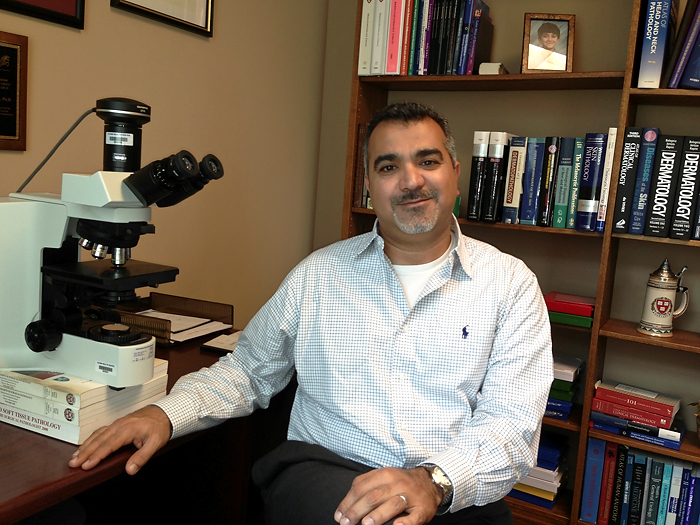
It may not be the most common form of skin cancer, but it’s the most deadly, and over the past decades melanoma cases continue to increase at alarming rates in the U.S.
As cases increase, diagnostic challenges also rise. Some suspicious tumors can be extremely difficult to diagnose as benign or malignant. If the lesion is a melanoma, it may be hard to predict whether it will become metastatic and spread to other parts of the body.
Research being done at the UConn Health Center is aimed at better identifying these tumors and how they will behave and in turn, improving treatment options for this lethal cancer.
Dr. Soheil Sam Dadras, associate professor of dermatology and genetics and developmental biology, is the primary author of the article “In-depth characterization of microRNA transcriptome in melanoma” recently published in PubMed and posted online in PLOS One.
Instead of studying the larger messenger RNAs, Dadras and his colleagues took a different approach and looked at the small non-coding RNAs which previously were ignored believing they had no function. But growing evidence has shown that particular microRNAs can regulate gene expression and may act as tumor suppressors or help initiate cancerous growth.
Working with scientists at the Connecticut Institute for Clinical and Translational Science, and Don-Guk Shin, an engineer at UConn Storrs, Dadras took biopsies from melanoma patients and used next generation sequencing to isolate the microRNAs. The sequencing produced a full repertoire of human microRNAs and from this data they defined a top-40 list, which properly classified normal (benign) growths from cancerous (malignant) ones.
“A major challenge in melanoma treatment is determining whether the cancer is going to spread,” says Dadras, “so we’re hoping to use this list of microRNAs as diagnostic/prognostic markers and compare what is primary and what is metastatic to see if the patient is going to have a good outcome or bad outcome.”
You can read the entire article here.
Follow the UConn Health Center on Facebook, Twitter and YouTube.



